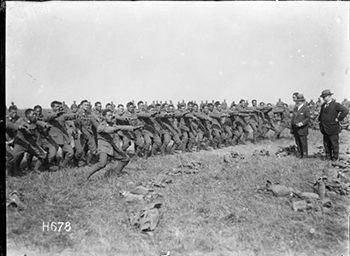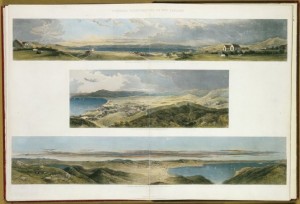In celebration of Ancestry in August, our family history month, our very own Māori specilist Ann Reweti wrote a very informative essay tracking a part of her whānau that have gone missing. You can see the essay below in full screen. Enjoy!
Tag: Maori
Armistice Centenary: Remembering the Contributions of Māori, Chinese, and Pasifika Men

On Sunday 11 November the world commemorates 100 years since the signing of the armistice that ended the First World War in 1918. Over 100,000 New Zealanders served during the war and more than 18,000 were killed. This had a devastating affect on people at home and on November 11 1918 the armistice came as a huge relief that was met with joy and thankfulness. Armistice Day has since become a time to reflect on the losses of the war, the hopes of peace, and the contributions of all who served.
An often unknown part of New Zealand’s involvement in the First World War is the courageous participation of Māori, New Zealand Chinese, Cook Island Māori, Fijians, Niueans, Tongans, Samoans, Tuvaluans, and men from Kiribati and Norfolk Island. More than 2,200 Māori and around 500 Pasifika men served overseas with the New Zealand Forces. Just like other ANZAC soldiers these men left their homes, families, and cultures to go to the other side of the world and fight in what was hoped to be ‘the war to end all wars’. They frequently experienced racism, deprivation, and a lack of acknowledgement after the war of their valuable contribution. The story of Te Hokowhitu a Tu, the Māori Pioneer Battalion, is an important part of our First World War history and we have a good selection of items in our library that chronicle the Battalion and the involvement of soldiers from the Pacific.
To learn more, check out the display of books on the second floor at the Central Library and explore the titles and websites listed below: Maiea te tupua : whānau accounts of Waikato-Maniapoto World War One veterans and one conscriptee : commemorating 100 years of World War One / produced by Pūrekireki Marae with the support from Te Pua Wānanga ̄ki te Ao of the University of Waikato, the Waikato Raupatu Lands Trust, the Maniapotō Māori Trust Board, Trust Waikato and Te Puni Kōkiri. Le fitafita mai Samoa/The force from Samoa: soldiers from the Samoan Islands in the Great War / Christine Liava’a. Chinese Anzacs : Australians of Chinese descent in the defence forces 1885-1919 / by Alistair Kennedy. Websites: Te Puni Kōkiri: Kei Wareware Tātou, Lest We Forget Te Ara: Māori Contingent in the First World War New Zealand History: Māori in the NZEF Pioneer Battalion Te Papa: Were there Pacific Islanders at Gallipoli in 1915? Sunday 11 November 2018 Commemorations: Armistice Day 2018 will be marked with events throughout New Zealand including the live-streaming of the Armistice Centenary National Ceremony at Pukeahu National War Memorial Park in central Wellington. Check out this website for details: Armistice Centenary
 Te Hokowhitu a Tu : the Maori Pioneer Battalion in the First World War / Christopher Pugsley.
Te Hokowhitu a Tu : the Maori Pioneer Battalion in the First World War / Christopher Pugsley.
“Distinguished military historian Chris Pugsley recounts the story of the Māori Pioneer Battalion for a new generation. Drawing on rare archival material and previously unpublished diaries and letters, he tells not only the wider story of the the Battalion’s military exploits but also gives a vivid account of the daily life of the soldiers on active service. Illustrated with a large number of fascinating photographs, the book also includes a complete list of all those soldiers who fought with the Battalion.” (Adapted from book cover)
This beautifully illustrated book contains whānau accounts of Waikato-Maniapoto World War One veterans and one conscriptee. It was written by Tom Roa and Maehe Paki and gives moving personal accounts from family members. Maori in the great war / James Cowan.
Maori in the great war / James Cowan.
“In 1914 the population of New Zealand was little more than one million, of whom 50,000 were Maori. Eventually 2227 Maori men served overseas, the vast majority volunteers. 336 paid the supreme sacrifice, of whom 196 were killed in action or died of wounds. A further 734 were wounded, an over-all casualty rate approaching 50%. This revised; Maori in the Great War; contains appendices specifying full details of every soldier who served as well as the Roll of Honour.” (Adapted from Syndetics summary) Niue and the Great War / Margaret Pointer.
Niue and the Great War / Margaret Pointer.
“The story of tiny Niue’s involvement in the Great War has captivated people since an account was first published by Margaret Pointer in 2000. In 1915, 160 Niuean men joined the NZEF as part of the 3rd Māori Reinforcements and set sail to Auckland and then Egypt and France. Most had never left the island before, or worn shoes before. Most spoke no English. Most significantly, they had no immunity to European disease. Within three months of leaving New Zealand, over 80 per cent of them had been hospitalised.” (Adapted from book cover) Koe kau to’a na’anau poletau/Valiant volunteers: soldiers from Tonga in the Great War / Christine Liava’a.
Koe kau to’a na’anau poletau/Valiant volunteers: soldiers from Tonga in the Great War / Christine Liava’a.
“At the beginning of the Great War, 1914-1918, the British Empire rallied to Lord Kitchener’s call to arms. British men in Tonga, a protectorate of Britain, although never part of the Empire, heeded his call and enlisted in the Australian and New Zealand forces. Some Tongan men joined them. This book lists the names of these men with their military details, family information, awards, and their deaths. Many photographs are included. An overview of their service and a chronology of events are also given.” (Adapted from Syndetics summary)
“At the beginning of the Great War, 1914-1918, Western Samoa was invaded and captured by a New Zealand force acting on behalf of Britain. Australia similarly invaded and captured German New Guinea. Thus the German possessions in the South Pacific were rendered incapable of assisting in the German war effort. American Samoa remained neutral until 1917, when American men were registered as available for service, Volunteers from both Western and American Samoa enlisted in New Zealand, Australia, America and Britain. This book lists all the men from the islands of Samoa who served in these forces, with their military details, family information, awards, and deaths. Photographs of as many as possible are included. An overview of the situation and events in Samoa, a chronology, and several appendices are also given.” (Syndetics summary) Soldiers from the Pacific: the story of Pacific Island soldiers in the New Zealand Expeditionary Force in World War One / Howard Weddell ; edited and produced by Peter Cooke, Defence of NZ Study Group.
Soldiers from the Pacific: the story of Pacific Island soldiers in the New Zealand Expeditionary Force in World War One / Howard Weddell ; edited and produced by Peter Cooke, Defence of NZ Study Group.
“During World War One over 1,000 men from Cook Islands, Fiji, Niue, Tonga, Kiribati, Tuvalu, Samoa and Norfolk Island volunteered to join the New Zealand Military Forces. Their service included Gallipoli, France, Egypt and Palestine. Despite the fact that 107 of these men died of disease or enemy action, 73 were wounded in action and three became prisoners of war, regrettably their story has yet to be told. They served New Zealand and this is their story.” (Back cover)
Chinese ANZACs discusses the little known participation of Australian-born and New Zealand-born Chinese in the defence forces during the First World War. Includes a list of New Zealand-born Chinese in the NZEF 1915-1919.
Make it your Māori New Year’s resolution to learn more about Matariki and Puanga!
Wellington City Library starts Māori New Year 2018 with this updated selection of books about Matariki and Puanga. We have also included some useful links that will take you to informative websites and digital resources. As Matariki continues its resurgence, and becomes an increasingly important part of New Zealand’s calendar, make it your Māori New Year’s resolution to learn more about Matariki and Puanga!
 Matariki : the star of the year / Rangi Matamua.
Matariki : the star of the year / Rangi Matamua.
“In mid-winter, Matariki rises in the pre-dawn sky. Based on research and interviews with Maori experts, this book seeks answers to questions such as What is Matariki? Why did Maori observe Matariki? How did Maori traditionally celebrate Matariki? When and how should Matariki be celebrated?and explores what Matariki was in a traditional sense so it can be understood and celebrated in our modern society.” (Adapted from Syndetics summary)
 Puanga, star of the Māori New Year: Ko Puanga-nui-ā-rangi te whetū mātāmua o te tau hou Māori: nānā i ārahi i ā Matariki tana tuahine tō muri iho / by Sam T. Rerekura. B.Ed., Dip. Tchg, Dip. Film & TV, Cert. Tertiary Teaching.
Puanga, star of the Māori New Year: Ko Puanga-nui-ā-rangi te whetū mātāmua o te tau hou Māori: nānā i ārahi i ā Matariki tana tuahine tō muri iho / by Sam T. Rerekura. B.Ed., Dip. Tchg, Dip. Film & TV, Cert. Tertiary Teaching.
“Most of the tribes of the Maori people in Aotearoa observed Puanga to mark the beginning of the Maori New Year. Through the study of the oral literature we are able to gaze into the past to understand how Maori perceived the star Puanga in ancient times.” (Adapted from Syndetics summary)
 Matariki : the Māori New Year / Libby Hakaraia.
Matariki : the Māori New Year / Libby Hakaraia.
“A general introduction to Matariki looking at: mythology, Maori and western perspectives; around the world – ancient constellation recognised in Greece (Pleiades) and in the Pacific (Matali’i, Mataliki, etc); celebrations; navigation; planting and harvesting; and Matariki today – ways to celebrate.” (Adapted from Syndetics summary)
 Celebrating the southern seasons : rituals for Aotearoa / Juliet Batten.
Celebrating the southern seasons : rituals for Aotearoa / Juliet Batten.
“In the tenth anniversary edition of this unique work, author Juliet Batten sheds more light on customs, symbols and meanings attached to seasonal changes. She reports on Matariki and other forms of celebration that New Zealanders have inherited, found, devised and adapted. She also suggests readings, myths and stories to enrich our holidays.” (Adapted from Syndetics summary)
 Night skies above New Zealand / Vicki Hyde.
Night skies above New Zealand / Vicki Hyde.
“From the Matariki celebrations of the Maori new year to Captain Cook’s search for accurate longitude, people in Aotearoa/New Zealand have always looked to the skies. Night Skies Above New Zealand tells of our astronomical heritage from the early voyagers to the research being undertaken today. The book provides a thorough yet readable introduction to the skies of the southern hemisphere and current astronomical knowledge, from the formation of our solar system to the violent death of giant stars.” (Adapted from Syndetics summary)
 Tātai arorangi, Māori astronomy : Work of the gods / Kay Leather and Richard Hall. Kay Leather and Richard Hall explore astronomy through a Maōri lens. Myth cycles are discussed and star charts are included along with a comprehensive glossary.
Tātai arorangi, Māori astronomy : Work of the gods / Kay Leather and Richard Hall. Kay Leather and Richard Hall explore astronomy through a Maōri lens. Myth cycles are discussed and star charts are included along with a comprehensive glossary.
 Te kāhui o Matariki : contemporary Māori art of Matariki / edited by Libby Hakaraia and Colleen Waata Urlich ; photography by Norman Heke.
Te kāhui o Matariki : contemporary Māori art of Matariki / edited by Libby Hakaraia and Colleen Waata Urlich ; photography by Norman Heke.
“This beautifulbook contains contemporary artwork, photography, poetry and short writings including personal experiences of Matariki – the Maori New Year. It also contains an introduction and background to Matariki. The artists include painters, sculptors, photographers, weavers, and carvers.” (Adapted from Syndetics summary)
 A concise encyclopedia of Maori myth and legend / Margaret Orbell.
A concise encyclopedia of Maori myth and legend / Margaret Orbell.
“Based on The Illustrated Encyclopedia of Maori Myth and Legend this is a concise guide to Maori myths and legends, religious beliefs, folklore and history. More than 300 entries, arranged alphabetically, reveal the subtlety and complexity of the traditional Maori view of the world, and a large index provides cross-referencing.” (Syndetics summary)
 Te taiao: Māori and the natural world.
Te taiao: Māori and the natural world.
“In this richly illustrated book, Maori scholars and writers share the traditional knowledge passed down the generations by word of mouth. It provides a unique window on the relationship of the people of this land with their environment, as well as the profound knowledge and necessary skills they needed to survive here.” (Syndetics summary)
 The seven sisters of the Pleiades : stories from around the world / Munya Andrews.
The seven sisters of the Pleiades : stories from around the world / Munya Andrews.
“The legends of the Seven Sisters of the Pleiades that poets, priests, prophets, shamans, storytellers, artists, singers, and historians have told throughout time are retold in this compilation of the stories that have found their inspiration in nine beautiful stars clustered together in the night sky. Serious astronomical research complements the variety of mythological explanations for the stars’ existence by providing the modern world’s scientific understanding of them.” (Adapted from Syndetics summary)
Te mahi māra hua parakore : a Māori food sovereignty handbook / nā Jessica Hutchings.
“Jessica Hutchings (hua parakore gardener, activist, academic and certified Te Waka Kai Ora grower) explains the political implications of the decisions that we make about growing and eating kai. She encourages us to take control over the food security of our whanau, providing practical advice on how to grow kai in accordance with the kaupapa of hua parakore, inspiring us with stories of hua parakore heroes and reassuring us that becoming a hua parakore gardener is a journey that anyone can embark on.”(Syndetics summary)
Further books to explore:
The illustrated encyclopedia of Maori myth and legend / Margaret Orbell.
Matariki : te whetũ o te tau=Aotearoa Pacific New Year.
Useful websites:
Te Ara: The Encylopaedia of New Zealand: Matariki
Kōrero with Morrie Love of the Tenths Trust at Central Library
On Friday 27 April (12:30pm), Morrie Love, chairman of Wellington Tenths Trust will present Stories behind the Māori place names of Te Whanganui-a-Tara / Wellington (harbour)
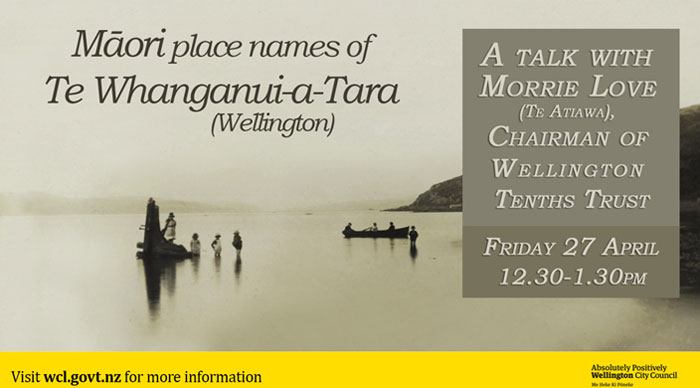
Whatu Ngarongaro He Tangata, Toitū He Whenua
Man disappears but the land remains
In the early 1800s the stories behind the naming of the land in Te Whanganui-a-Tara were often sourced to Te Whatahoro Jury and three women – Ngarimu Mawene, Mere Ngamai and Rangiwahia Te Puni.
Te Whatahoro Jury
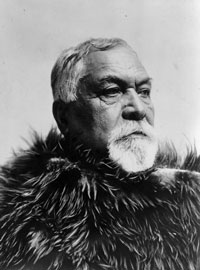
Te Whatahoro Jury was born 1841 in Hawkes Bay — his father worked for William Williams. In 1842 the family moved to Wairarapa. He became a scribe to Te Matorohanga and Nepia Pohuhu and was charged with recording tribal traditions on behalf of his iwi. Some of this material was used later, by Elsdon Best, T. W. Downes, S. Percy Smith and John White. He married seven times. He died 1923 and is buried at Papawai cemetery.
Ngarimu Mawene Hohua
Ngarimu Mawene is listed in documents held at Te Papa. Ngarimu Mawene may have been connected to Hohua Te Atuawera and Hariata Mawene, with links therefore Te Ngatoro and (first?) husband, Wakairianiwa. Te Ngatoro was, in turn, a daughter to Aniwaniwa and Tawhirikura. It is said that, as a young girl, Ngarimu danced on the beach at Pito-one as the “Tory Pioneers” arrived in 1839.[1]
Mere Kapa Ngamai I
Mere Kapa Ngamai I was the daughter of Rawiri Kowheta and Maweuweu.
She married, firstly James Harrison, and their children were James Te Tana Harrison and Mere Kapa Ngamai II. Mere later married Wi Tako Ngatata. She was also known as Mere Ngawai o Te Wharepouri.
Mere was a well-known composer — two of her compositions which have survived:
- Whakawaiwai ai, and
- A bird song — what the tui says
(Link is to Legends of the Māori. Vol. I / James Cowan)
Rangi Te Puni
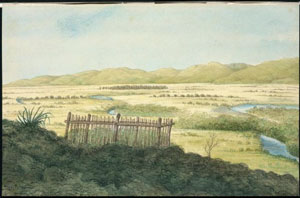
Rangi Te Puni is believed to have been born in Waipa Valley, with links to Tainui and Ngāti Rārua. She succeeded to land at Te Tau Ihu o te Waka. Rangiwahia,(Rangiwhaia) was the daughter of Rangitakaia, and grandchild of Hinehape.[2] Rangiwahia was the wife of Henare Te Puni, who in turn was the son of Honiana Te Puni and Wikitoria Muri-tu-waka-roto.
[Whakapapa of Aperaham Huritapae: Nelson MB, 13/6/89 / [WMB NO. 3, P. 39]
James Cowan
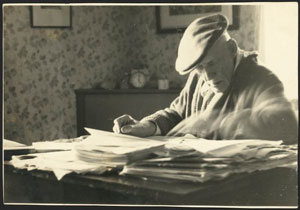
James Cowan has written about Māori place names of Te Whanganui-a-Tara in the Evening Post, 1912. These are available on PapersPast, in the Evening Post:
Cowan’s kōrero has been reproduced, also, in Pat Lawlor‘s book:
Old Wellington Days. Chapter 8: James Cowan and his Wellington Place-names.
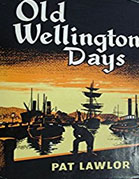
Threads are picked up again in:
A list of Māori place names of Te Whanganui-a-Tara concludes Elsdon Best’s The land of Tara. Here is a map from that book.
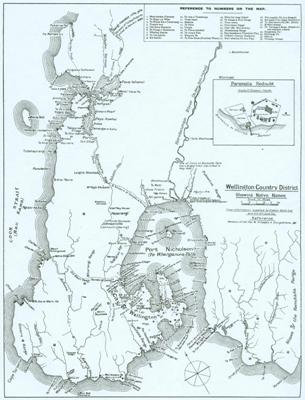
Te Whatahoro Jury’s work in transcribing oral histories possibly, formed a basis for stories in Elsdon Best’s – The land of Tara, published first in the Journal of the Polynesian Society, and then in book form, 1919.
Best’s list of names was revised and greatly expanded by G Leslie Adkin in:
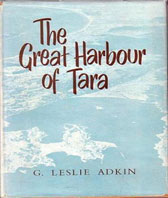
Surveyors
Māori have long had an interest in the spiritual value of land: it pervades their sense of identity and how they relate to others. But land is also the foundation of their survival, in economic as well as cultural terms [3]
Boundary markers : land surveying and the colonisation of New Zealand / Byrnes, Giselle
Giselle Byrnes, writing of surveyors as Pākehā boundary markers, shows that these men were also naming the land, and “owning” the whenua for their colonial government in a way that parallels the Māori concept of Tapa Whenua.
Boundary markers suggest that the surveyors colonised the land through language, literally inscribing it with new meanings and ways of seeing: place naming and mapping are perhaps the best examples of this [4]
For Māori, in oral tradition, naming the land was essential for defining iwi and hapū boundaries. Sites of tribal significance — maunga, awa, moana then become key elements in kawa o te marae, and whanaungatanga, in rituals of encounter, where politeness decrees that you ask not “ko wai koe?/ who are you?”, but rather, “nō hea koe? / where are you from?”
Surveyors extended their sketching skills to record not just Pākehā boundaries, but also snapshots of the life and times of our tūpuna.
Somes Island
Legend has it that both Matiu and Makaro Islands received their original Māori names from Kupe, the semi-legendary first navigator to reach New Zealand and get home again with reports of the new land. He named them after his two daughters (or, in some versions of the tale, nieces) when he first entered the harbour about 1000 years ago.
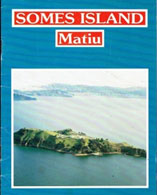
“After European settlement, the island was known for over a century as Somes Island. In 1839 it fell under the control of the New Zealand Company along with much of the greater Wellington region.”
“The island was renamed after Joseph Somes, the company’s deputy-governor and financier at the time. In 1997 however, the New Zealand Geographic Board assigned the official bilingual name of Matiu/Somes in recognition of the island’s colourful European and Māori histories.” [5]
I look forward to Morrie Love’s kōrero to reveal the layers of history that lie both beneath our feet and before our eyes, and to provide an opportunity to understand the heritage of Te Whanganui-a-Tara.
References
- Stories in names / Tohunga. New Zealand Railways magazine ; vol. 9, issue 6 (1934)
- Maori Land Court. Nelson Minute Book. 13/6/89. P. 39.
- Byrnes, Giselle. Boundary markers. P. 2
- Ibid. p. 6
- Wikipedia contributors. (2018, March 16). Matiu / Somes Island. In Wikipedia, The Free Encyclopedia. Retrieved 02:26, April 13, 2018, from https://en.wikipedia.org/w/index.php?title=Matiu_/_Somes_Island&oldid=830688561
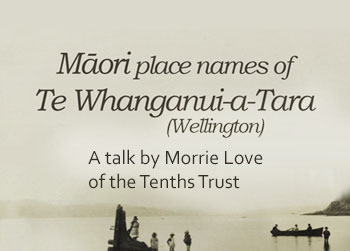
Dr George S Evans : a life
Recently I breathed in the gentle gentility of the Wellington Club, The Terrace, whilst held in awe of Helen Riddiford’s meticulous and deeply researched account of the New Zealand Company’s finest member, Dr George Samuel Evans.
 By evening’s end, there were surely more than the just the two of us who would attest to his right to be named Wellington’s founding father, – a man who stood tall on the principles and the application of the Company’s constitution and held a desire to include tangata whenua in te ao hurihuri, / an evolving new life. In the words of one of our two official languages – here was a man truly worthy of the description: he kōtuku rerenga tahi.
By evening’s end, there were surely more than the just the two of us who would attest to his right to be named Wellington’s founding father, – a man who stood tall on the principles and the application of the Company’s constitution and held a desire to include tangata whenua in te ao hurihuri, / an evolving new life. In the words of one of our two official languages – here was a man truly worthy of the description: he kōtuku rerenga tahi.
For all the sentiments expressed above – how many people , today, remember any details of this man who gave his name to that inner bay (Evans’s / Evans Bay) and whose contribution to the settlement placed him second only to Colonel Wakefield, in his roles, which included that of chief judicial authority for the new colony.
When Edward Gibbon Wakefield accompanied Lord Durham to Canada, it was Dr Evans who stepped forward to place his hand firmly on the tiller of the colonial ship.
But who was this man? George Evans grew up in a household where civil and religious liberty was embraced. He was a brilliant scholar who excelled in Latin, Greek and Hebrew – His later work spanned the fields of education, judiciary and journalism. In 1928 he became, briefly, headmaster of Mill Hill School, London.

(Source: School House at Mill Hill School : https://en.wikipedia.org/wiki/Mill_Hill_School)
It was here that he met school matron Mrs Riddiford, whose husband passed away in 1829. George and Harriet married, 16 January 1930, and George became the stepfather of Amelia (13 years) and Daniel (16 years) – he, Daniel, who was to become the founder of the Riddiford farming dynasty at Orongorongo and the stations around the Wairarapa coast of New Zealand.
There is so much detail of Evans’ life within the pages of this book. There’s the interesting story of his involvement with Nayti and Hiakai, two passengers on the Mississippi who became stranded at Le Havre, were rescued by the New Zealand Association and provided with lodgings by Wakefield and Evans, in the 1830s. With Hiakai’s help George Evans was introduced to Māori customs and reo. He began a grammar of Te Reo Māori, which was completed in 1839, but never officially published. Wellington City Central Library holds a copy of this Manuscript of a Maori grammar.
The top view stretches across Thorndon Flat with Dr Evans’ house on the left, a range of early houses and businesses along the waterfront and on the right, Colonel William Wakefield’s house with flagpole.
(Source: Brees, Samuel Charles, 1810-1865 :Pictorial Illustrations of New Zealand. London, John Williams and Co., Library of Arts, 141, Strand, 1847.. Ref: PUBL-0020-22. Alexander Turnbull Library, Wellington, New Zealand. http://natlib.govt.nz/records/22816178)
Dr Evans fulfilled a designated role as advocate for Māori in all legal disputes – with varying degrees of success. Helen’s easy- read documentation of Dr Evans life and work in the new colony makes this book an absolute must for those of us mindful of the view – that you must first understand and embrace the past in order to move forward.
The study of the settlement of Wellington is a very complex exercise – but – don’t be confined only to those official publications — the reports and commissions, and records of deeds of release – Here lies, within these pages, the flavour of that era. This is a far more interesting journey by way of Helen’s archival research and her detailed account of Dr Evans work.
Dr Evans returned to England, 1846-52, and was dealt to harshly by the Company, in clearing the debts on his town and country sections in Wellington. It was an example of Wakefield’s ‘ability’ to turn against his closest allies.
George Evans and Harriet moved to Melbourne, 1853. He planned to undertake legal work but also began working with the Melbourne Morning Herald. He later gained a seat in the legislative assembly. His journalistic output was legendary. George and Harriet returned to New Zealand, 1865, but Harriet died 31 March 1866, and Dr Evans’ death followed in 1868.
In the words of Helen Riddiford “In the colonies he was head and shoulders above many of his peers in education and ability. He operated within an influential network of men, but was always independent in his views, which isolated him from many of his contemporaries. He was viewed as a ‘singular character’ a gentleman almost unique in this setting. His many visionary ideas were handicapped by a volatile temperament and principles that were compromised by circumstances, an unpredictable man of reckless courage whose steadfast commitment to the creation and success of Wellington was fully acknowledged after his death. Amongst others, The Independent noted that he was ‘one of the founders, if not the real founder of this colony. There is scarcely an official document of the period in which [his] name is not conspicuous”.
Here was a man truly worthy of the title bestowed by his Māori friends – Nui, Nui Rangatira
Māoriland Festival
The Māoriland Film Festival kicks off in Otaki later this month and we think you will want to be there!! Running from 23-27 March, the festival is the largest indigenous film festival in the Southern Hemisphere and will feature films from the Marshall Islands, USA and Canada, while also showcasing Māori cinema from Aotearoa. You can see the list of feature films and the film schedule here and follow the festival blog here. My pick for the festival is Three Wise Cousins; check out the trailer below!
Well-known New Zealand films The Dark Horse and The Deadlands both featured in the 2015 Māoriland festival and are both available at the library:
 The dead lands / a Matthew Metcalfe production ; a Toa Fraser film.
The dead lands / a Matthew Metcalfe production ; a Toa Fraser film.
After his tribe is slaughtered through an act of treachery, Hongi, a Maori chieftain’s teenage son, must avenge his father’s murder in order to bring peace and honor to the souls of his loved ones. Vastly outnumbered by a band of villains, Hongi’s only hope is to pass through the feared and forbidden Dead Lands and forge an uneasy alliance with the mysterious Warrior, a ruthless fighter who has ruled the area for years.
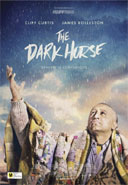 The dark horse / Four Knights Film in association with The New Zealand Film Commission [and six others] present ; a film by James Napier Robertson.
The dark horse / Four Knights Film in association with The New Zealand Film Commission [and six others] present ; a film by James Napier Robertson.
The Dark Horse is an emotionally-charged and inspiring drama about a man who searches for the courage to lead, despite his own adversities – finding purpose and hope in passing on his gift to the children in his community.


